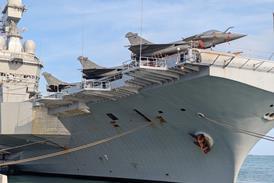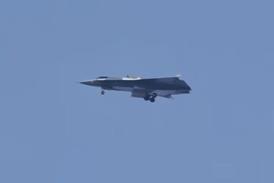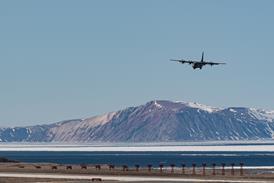United Technologies shuffled executives at its major subsidiaries earlier this year. Former Hamilton Sundstrand chief executive David Hess took over Pratt & Whitney from Steven Finger. Meanwhile, former P&W strategies and P&W Canada chief executive Alain Bellemare moved to the top spot at Hamilton Sundstrand (stand B20). Bellemare arrives at Hamilton at a critical time. Even as the company copes with the effects of a global recession, it must stay on schedule as Boeing ramps up production of the 787. Stephen Trimble interviews Bellemare about how the future looks
You've been associated with Pratt & Whitney Canada for most of your career. How do you think Hamilton Sundstrand can benefit from that experience?
First of all we are talking about great organisations, and actually they are pretty similar in nature. They have things in common. Both organisations have a very solid track record of success. They have been winning multiple applications. They have good content on great aircraft, and they are very well positioned for the future.
 |
|---|
| © Hamilton Sundstrand |
I think you are talking about two organisations that have been doing well, they are well positioned and their future is bright. So you can always learn from one another, but the punch line here is we are talking about organisations that have a winning spirit and have a great capability. They have a super relationship with customers and they have good internal processes. So it is not like you are moving from one organisation that is going well to one that is not.
Hamilton Sundstrand was singled out by Boeing in 2007 for not delivering parts on time for the 787 program. How has the company responded to that issue?
I joined the organisation in January. I started the transition with David Hess in October-November, at which time we had some work to do with Boeing. But in terms of late deliveries right now I am not aware of anything. We are working very closely with Boeing. Actually it has been a very good journey.
We are in synch right now. We are supporting Boeing for the first flight. Our internal teams are working aggressively on the certification and qualification phase to be ready for the full certification of the aircraft. So we are actually doing pretty well. I'm sure you've seen last week that we had our auxiliary power unit first run on the 787 in Seattle
How did that go?
I just happened to be there. I had a meeting with Boeing at the same time, and the timing was great. So we ran the APU for the first time. It was an amazingly quiet APU. We were saying the in past and in our brochures and in our various discussions that this is like an APU that is 50% more quiet than the APU that is the current APU on the Boeing 767. I will tell you, I was standing next to it. It was amazingly quiet. That was the feedback from most of the people around the aircraft. So I think we're in good shape. We're in good shape with our APU. We're in good shape with all of our systems and subsystems. We got quite a bit of high technology on this aircraft, so we honestly we have quite a bit of work to do. But we're tracking very well right now.
There's been all this focus on first flight and getting that first aircraft into the air, and then the follow-on test aircraft. But then right on the back of that you've got a production ramp going up to 10 a month. How ready are you for that and how do you prepare?
Obviously, on our side, what we are doing right now no matter what is we are capitalising, we are getting the supply chain up and ready, we are training people and we are making sure we have all of our processes in place to support the Boeing ramp-up and our schedule. We need to understand this programme didn't start yesterday. We've been at it for a long time. So as you go through the development phase, you also work on your planning to build the capacity to make sure you have the capacity to support a production ramp going up. But your point is right though. At this point we are focused now on entry into service and production readiness. That's where the focus is. Obviously, we've got the development team still working on qualification and certification and making sure our systems are ready.
It's obvious the industry no matter what sector you're in is having a tough year. United Technologies is expecting flat earnings from Hamilton Sundstrand this year, but there is still going to be a round of furloughs, cost cutting and other actions. How do you keep the organisation focused and motivated through this period where you're just trying to stay even and taking cuts at the same time?
It's a good question. I'm not sure there's one single answer to that. I guess it's a bit of experience too. I led Pratt & Whitney Canada through the last downcycle. It was also pretty challenging at that time. In both cases, again we have something in common. It's interesting we are talking about the 787, which is obviously our largest programme. And it's a very exciting programme.
We also in the background have a dozen or so major programmes. So the engineering and development pipeline is pretty full. We will be spending roughly $1 billion or so this year between our military applications and commercial applications. So the organization is facing a decline on the production side - aero, original equipment, and aftermarket - which makes it challenging. So we need to adjust our manpower with the market demand.
But at the same time I think the organisation and the people in the organization can see that there is a bright future for us because of all the new programmes we're working on. So I think this is what is helping us to keep spirit high in the organisation. People understand that aerospace is a cyclical industry. The key here in my view is your people understand that you will come out of the cycle stronger because you keep investing in the downturn. That's what keeps all this in balance.
- All the latest news, images and video from the Paris Air Show
Source: Flight Daily News























